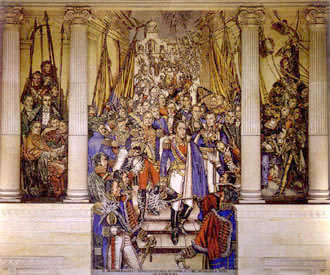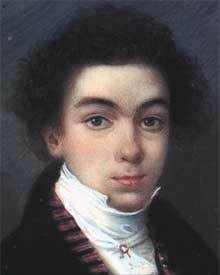|
Venezuelan Islands
The Federal Dependencies of Venezuela ( es, link=no, Dependencias Federales de Venezuela) encompass most of Venezuela's offshore islands in the Caribbean Sea and the Gulf of Venezuela, excluding those islands that form the State of Nueva Esparta and some Caribbean coastal islands that are integrated with nearby states. These islands, with a total area of 342 square kilometres, are sparsely populated – according to the preliminary results of the 2011 Census only 2,155 people live there permanently, with another hundred from Margarita Island who live there seasonally to engage in fishing. Local government is officially under the authority of Central government in Caracas, although ''de facto'' power is often held by the heads of the sparse and somewhat isolated communities that decorate the territories. History The origins of the population of the Federal Dependencies can be found in the Archipelago of Los Roques dating back to approximately 1200 BC, when it is believed ... [...More Info...] [...Related Items...] OR: [Wikipedia] [Google] [Baidu] |
Isla De Aves
Isla de Aves (; Spanish language, Spanish for "Island of Birds" or "Birds Island"), or Aves Island, is a Federal Dependencies of Venezuela, Federal Dependency of Venezuela. It has been the subject of numerous territorial disputes (now resolved) with the United States (through the Guano Islands Act of 1856), neighboring independent islands, such as Dominica, and European mother countries of surrounding dependent islands, such as the Netherlands, or the United Kingdom. It is a part of the Aves Ridge and lies to the west of the Windward Islands chain at . It is in length and never more than in width, and rises above the sea on a calm day. Under a particular interpretation of the United Nations Convention on the Law of the Sea, it could be classified as a Islet, rock, which would only give Venezuela a twelve nautical mile economic zone. However, Venezuela claims it is an island, which grants it a exclusive economic zone. Mostly sand, a small portion has some scrubby vegetation. ... [...More Info...] [...Related Items...] OR: [Wikipedia] [Google] [Baidu] |
Caracas
Caracas (, ), officially Santiago de León de Caracas, abbreviated as CCS, is the capital and largest city of Venezuela, and the center of the Metropolitan Region of Caracas (or Greater Caracas). Caracas is located along the Guaire River in the northern part of the country, within the Caracas Valley of the Venezuelan coastal mountain range (Cordillera de la Costa). The valley is close to the Caribbean Sea, separated from the coast by a steep 2,200-meter-high (7,200 ft) mountain range, Cerro El Ávila; to the south there are more hills and mountains. The Metropolitan Region of Caracas has an estimated population of almost 5 million inhabitants. The center of the city is still ''Catedral'', located near Bolívar Square, though some consider the center to be Plaza Venezuela, located in the Los Caobos area. Businesses in the city include service companies, banks, and malls. Caracas has a largely service-based economy, apart from some industrial activity in its metropolitan ar ... [...More Info...] [...Related Items...] OR: [Wikipedia] [Google] [Baidu] |
Isabella II Of Spain
Isabella II ( es, Isabel II; 10 October 1830 – 9 April 1904), was Queen of Spain from 29 September 1833 until 30 September 1868. Shortly before her birth, the King Ferdinand VII of Spain issued a Pragmatic Sanction to ensure the succession of his firstborn daughter, due to his lack of a son. She came to the throne a month before her third birthday, but her succession was disputed by her uncle the Infante Carlos (founder of the Carlist movement), whose refusal to recognize a female sovereign led to the Carlist Wars. Under the regency of her mother, Spain transitioned from an absolute monarchy to a constitutional monarchy, adopting the Royal Statute of 1834 and Constitution of 1837. Her effective reign was a period marked by palace intrigues, back-stairs and antechamber influences, barracks conspiracies, and military '' pronunciamientos''. She was deposed in the Glorious Revolution of 1868, and formally abdicated in 1870. Her son, Alfonso XII, became king in 1874. Bi ... [...More Info...] [...Related Items...] OR: [Wikipedia] [Google] [Baidu] |
Gran Colombia
Gran Colombia (, "Great Colombia"), or Greater Colombia, officially the Republic of Colombia (Spanish: ''República de Colombia''), was a state that encompassed much of northern South America and part of southern Central America from 1819 to 1831. It included present-day Colombia, mainland Ecuador (i.e. excluding the Galápagos Islands), Panama, and Venezuela, along with parts of northern Peru, northwestern Brazil, and Part of Guyana. The terms Gran Colombia and Greater Colombia are used historiographically to distinguish it from the current Republic of Colombia, which is also the official name of the former state. However, international recognition of the legitimacy of the Gran Colombian state ran afoul of European opposition to the independence of states in the Americas. Austria, France, and Russia only recognized independence in the Americas if the new states accepted monarchs from European dynasties. In addition, Colombia and the international powers disagreed over the exte ... [...More Info...] [...Related Items...] OR: [Wikipedia] [Google] [Baidu] |
Captaincy General Of Venezuela
The Captaincy General of Venezuela ( es, Capitanía General de Venezuela), also known as the Kingdom of Venezuela (), was an administrative district of colonial Spain, created on September 8, 1777, through the Royal Decree of Graces of 1777, to provide more autonomy for the provinces of Venezuela, previously under the jurisdiction of the Audiencia of Santo Domingo (and thus the Viceroyalty of New Spain) and then the Viceroyalty of New Granada. It established a unified government in political (governorship), military ( captaincy general), fiscal ( intendancy), ecclesiastical (archdiocese) and judicial ('' audiencia'') affairs. Its creation was part of the Bourbon Reforms and laid the groundwork for the future nation of Venezuela, in particular by orienting the province of Maracaibo towards the province of Caracas. History Antecedents The Bourbon dynasty had already taken steps towards reorganizing their overseas possessions and Venezuela, in particular. When the New Granadan ... [...More Info...] [...Related Items...] OR: [Wikipedia] [Google] [Baidu] |
Charles III Of Spain
it, Carlo Sebastiano di Borbone e Farnese , house = Bourbon-Anjou , father = Philip V of Spain , mother = Elisabeth Farnese , birth_date = 20 January 1716 , birth_place = Royal Alcazar of Madrid, Spain , death_date = , death_place = Royal Palace of Madrid, Spain , place of burial= El Escorial , religion = Roman Catholicism , signature = Autograph Charles III of Spain.svg Charles III (born Charles Sebastian; es, Carlos Sebastián; 20 January 1716 – 14 December 1788) was King of Spain (1759–1788). He also was Duke of Parma and Piacenza, as Charles I (1731–1735); King of Naples, as Charles VII, and King of Sicily, as Charles V (1734–1759). He was the fifth son of Philip V of Spain, and the eldest son of Philip's second wife, Elisabeth Farnese. A proponent of enlightened absolutism and regalism, he succeeded to the Spanish throne on 10 August 1759, upon the death of his childless half-brother Ferdinand VI. In 1731, t ... [...More Info...] [...Related Items...] OR: [Wikipedia] [Google] [Baidu] |
Simón Bolívar
Simón José Antonio de la Santísima Trinidad Bolívar y Palacios (24 July 1783 – 17 December 1830) was a Venezuelan military and political leader who led what are currently the countries of Colombia, Venezuela, Ecuador, Peru, Panama and Bolivia to independence from the Spanish Empire. He is known colloquially as '' El Libertador'', or the ''Liberator of America''. Simón Bolívar was born in Caracas in the Captaincy General of Venezuela into a wealthy criollo family. Before he turned ten, he lost both parents and lived in several households. Bolívar was educated abroad and lived in Spain, as was common for men of upper-class families in his day. While living in Madrid from 1800 to 1802, he was introduced to Enlightenment philosophy and met his future wife María Teresa Rodríguez del Toro y Alaysa. After returning to Venezuela, in 1803 del Toro contracted yellow fever and died. From 1803 to 1805, Bolívar embarked on a grand tour that ended in Rome, where he swore to end ... [...More Info...] [...Related Items...] OR: [Wikipedia] [Google] [Baidu] |
Agustín Codazzi
Giovanni Battista Agostino Codazzi (alternatively known in Latin America as Agustín Codazzi; 12 July 1793 – 7 February 1859) was an Italo-Venezuelan soldier, scientist, geographer, cartographer, and governor of Barinas (1846–1847). He made his main investigations and cartographic work in Venezuela and Colombia, thereby creating for both countries a complete set of maps and statistics after the tumultuous years following independence from the Spanish Empire. Biography Codazzi was born in the Italian city of Lugo. Since young he appreciated the ideals of the French Revolution and, after his studies at the military academy "Scuola di Artiglieria" of Pavia, actively served in the Napoleon Army. With the defeat of Napoleon in 1815 Codazzi moved away from Italy and after some travels went to Venezuela, where he offered his military knowledge to Simon Bolivar. Successively he received the task of mapping the area of the Maracaibo Lake and the borders between Venezuel ... [...More Info...] [...Related Items...] OR: [Wikipedia] [Google] [Baidu] |
Spanish Empire
The Spanish Empire ( es, link=no, Imperio español), also known as the Hispanic Monarchy ( es, link=no, Monarquía Hispánica) or the Catholic Monarchy ( es, link=no, Monarquía Católica) was a colonial empire governed by Spain and its predecessor states between 1492 and 1976. One of the largest empires in history, it was, in conjunction with the Portuguese Empire, the first to usher the European Age of Discovery and achieve a global scale, controlling vast portions of the Americas, territories in Western Europe], Africa, and various islands in Spanish East Indies, Asia and Oceania. It was one of the most powerful empires of the early modern period, becoming the first empire known as "the empire on which the sun never sets", and reached its maximum extent in the 18th century. An important element in the formation of Spain's empire was the dynastic union between Isabella I of Castile and Ferdinand II of Aragon in 1469, known as the Catholic Monarchs, which in ... [...More Info...] [...Related Items...] OR: [Wikipedia] [Google] [Baidu] |
Monarchy Of Spain
, coatofarms = File:Coat_of_Arms_of_Spanish_Monarch.svg , coatofarms_article = Coat of arms of the King of Spain , image = Felipe_VI_in_2020_(cropped).jpg , incumbent = Felipe VI , incumbentsince = 19 June 2014 , his/her = His , heir_presumptive = Leonor, Princess of Asturias , first_monarch = Isabella I of Castile and Ferdinand II of Aragon ( Catholic Monarchs of Spain) , date = , appointer = Hereditary , residence = Royal Palace of Madrid (official)Palace of Zarzuela (private) , website The Spanish Monarchy The monarchy of Spain or Spanish monarchy ( es, Monarquía Española), constitutionally referred to as The Crown ( es, La Corona), is a constitutional institution and the highest office of Spain. The monarchy comprises the reigning monarch, his or her family, and the royal household organization which supports and facilitates the monarch in the exercise of his du ... [...More Info...] [...Related Items...] OR: [Wikipedia] [Google] [Baidu] |







